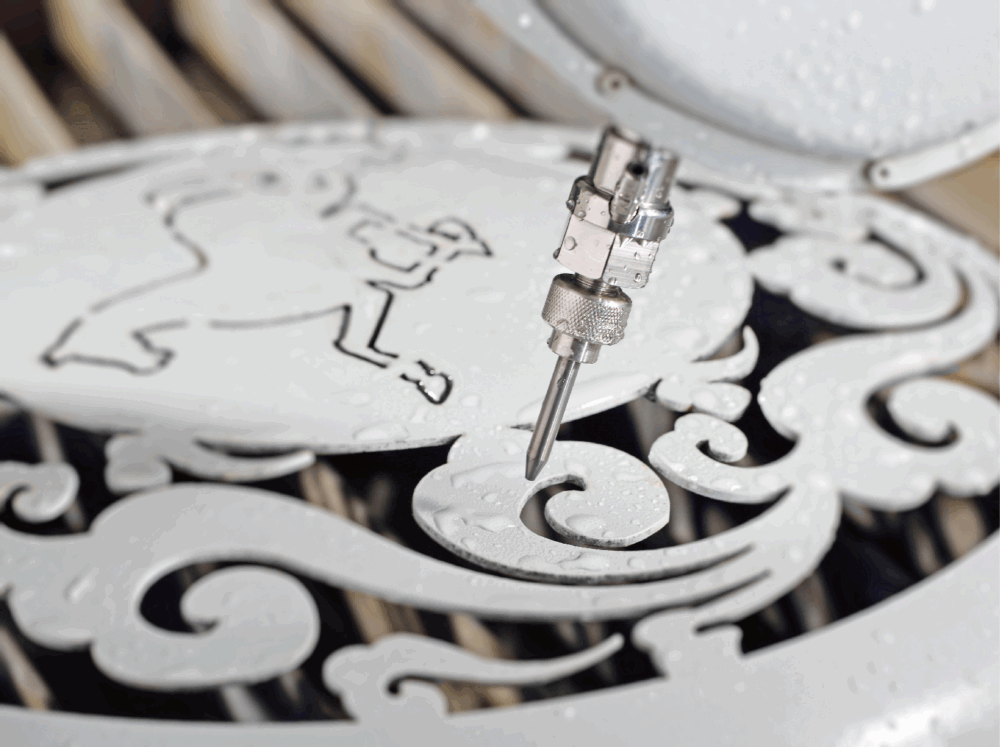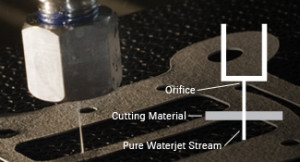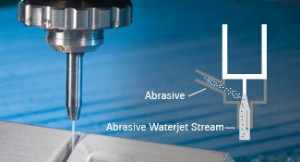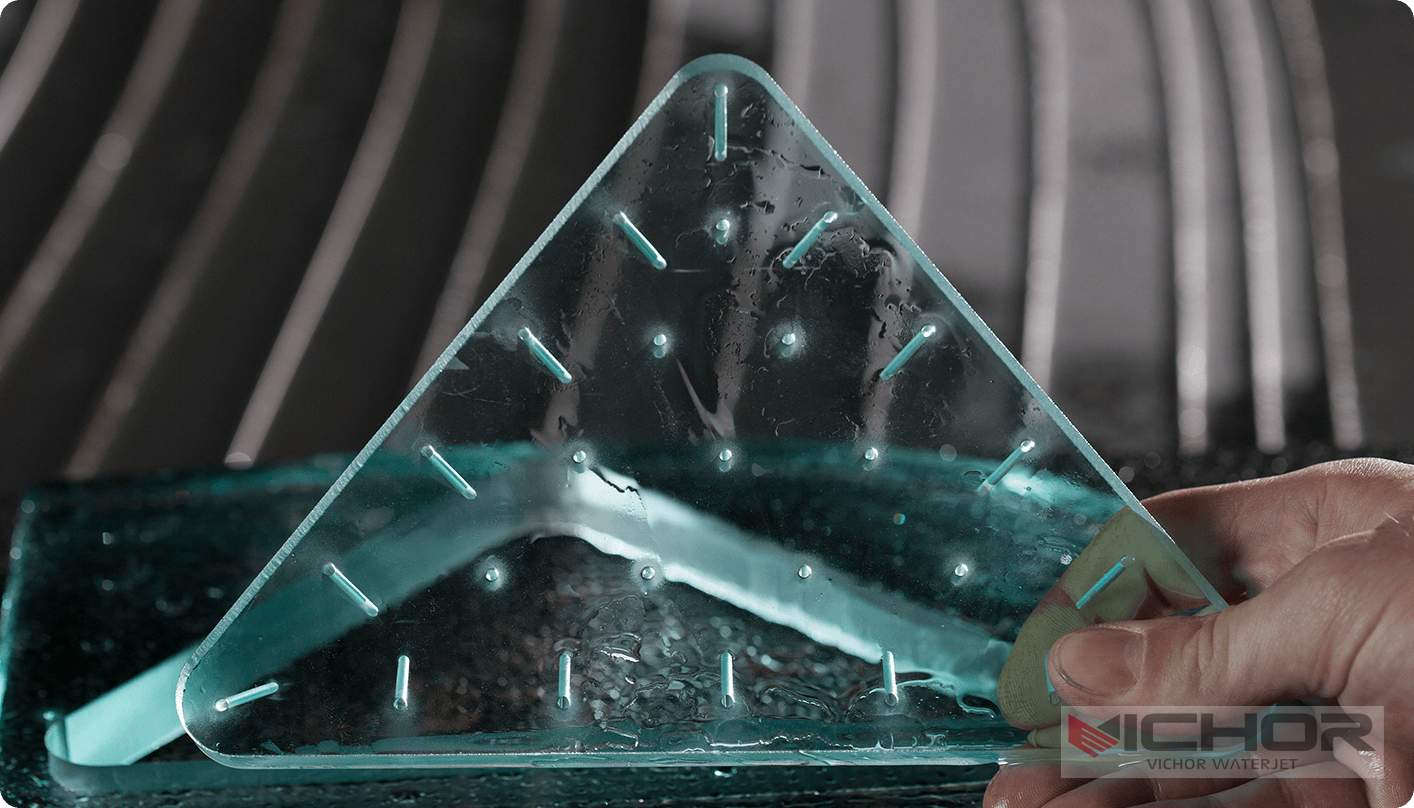
How Does Water Jet Cutting Work? The Ultimate Guide to Precision Cutting Technology
Water jet cutting stands as one of the most versatile and fascinating manufacturing technologies available today. Capable of slicing through materials ranging from soft rubber to hardened titanium with remarkable precision and minimal heat impact, it solves problems traditional cutting methods often struggle with. But how does water jet cutting work? This comprehensive guide delves deep into the mechanics, components, and capabilities of this powerful process.
Understanding the Core Principle: Harnessing the Power of Water
At its most fundamental level, water jet cutting utilizes an extremely high-pressure stream of water, often mixed with abrasive particles, to erode material. Think of it as an ultra-high-tech, controllable version of natural water erosion, accelerated millions of times over. The key lies in concentrating immense kinetic energy onto a tiny point.
The Physics: Energy Conversion and Erosion
The process begins by pressurizing ordinary water to staggering levels, typically between 30,000 and 90,000 PSI (2,000 to 6,200 bar). This high-pressure water is then forced through a tiny orifice, usually made of sapphire or diamond, measuring between 0.003″ to 0.015″ (0.076mm to 0.38mm) in diameter. As the water accelerates through this constriction, its pressure energy converts into kinetic energy, resulting in a supersonic jet exiting the orifice at speeds exceeding Mach 3 (over 2,300 mph or 3,700 km/h).
When this ultra-high-velocity stream strikes the target material, its immense kinetic energy overwhelms the material’s structural bonds. The water molecules act like microscopic hammers, forcibly displacing material particles through sheer impact force. For softer materials (like foam, rubber, food, or thin plastics), this pure water stream alone is sufficient to perform a clean cut. Understanding this energy transfer is crucial to grasping how does water jet cutting work for diverse materials. The lack of heat generation during this pure water phase prevents melting, warping, or heat-affected zones (HAZ), a significant advantage over thermal processes.
The Essential Components: Building the Pressure Powerhouse
A waterjet cutting system is a sophisticated integration of several critical subsystems, each playing a vital role:
High-Pressure Pump: The heart of the system. There are two main types:
Intensifier Pumps: Utilize hydraulic oil acting on a large piston to drive a smaller piston pressurizing the water. This principle provides very high and consistent pressure (commonly 60,000-90,000 PSI). They are robust and widely used in industrial settings.
Direct-Drive (Crankshaft) Pumps: Use an electric motor directly connected via a crankshaft to oscillate plungers that pressurize the water. Generally operate at slightly lower pressures (30,000-55,000 PSI) but offer faster ramp-up times and potentially higher flow rates. They are often more energy-efficient.
Water Filtration & Conditioning Unit: Pure water is critical. Incoming water is meticulously filtered (often down to 0.5 microns or less) and deionized or softened. Contaminants or minerals can clog the tiny orifice or damage high-pressure components, significantly impacting how does water jet cutting work reliably.
High-Pressure Tubing: Specialized, flexible, multi-layer hoses (typically stainless steel wire braid over a polymer core) transport the ultra-high-pressure water from the pump to the cutting head. These must withstand immense pressure and cyclic fatigue.
Cutting Head: Where the magic happens. It houses:
Orifice: The first critical component (sapphire or diamond). Creates the initial high-velocity water jet.
Mixing Chamber: Where abrasive is introduced into the water stream (for abrasive cutting).
Focusing Tube (Mixing Tube/Nozzle): A long, narrow tube (usually tungsten carbide or synthetic sapphire) where water and abrasive mix thoroughly and form a coherent, abrasive-laden cutting stream. Its length and diameter significantly influence cut quality and kerf width.
Abrasive Delivery System: A precisely controlled feeder (often using a vibratory mechanism or venturi effect) that meters garnet abrasive into the mixing chamber at a controlled rate.
CNC Motion System: A precision multi-axis (typically X, Y, and sometimes Z or rotational A/B/C axes) gantry or robotic system that moves the cutting head over the workpiece according to programmed paths. This dictates the shape and accuracy of the cut.
Catcher Tank: Located beneath the cutting table, this tank holds water, dissipates the energy of the spent jet, and collects cut material (slug) and used abrasive. It often includes a slat or grate system to support the workpiece.
CNC Controller: The “brain” of the operation. It interprets CAD/CAM files (like DXF or DWG), translates them into machine motion paths, and controls all machine functions (pump pressure, abrasive feed rate, head speed, on/off).
Abrasive vs. Pure Water Cutting: Choosing the Right Stream
Understanding the difference between these two modes is fundamental to how does water jet cutting work effectively across the material spectrum:
Pure Water Jet Cutting:
How it Works: Uses only the ultra-high-pressure water stream generated after the orifice.
Materials: Ideal for soft, thin, or easily damaged materials: Foam (all types), rubber, gaskets, paper, cardboard, diapers, food products (cake, frozen fish), thin plastics, insulation, fiberglass, automotive interior fabrics, diapers.
Advantages: Very narrow kerf (cut width), extremely smooth cut edges, no heat, minimal burr, quiet operation, low operating cost (no abrasive), very fast cutting speeds on suitable materials.
Disadvantages: Limited material thickness capability (usually < 1 inch for soft materials, much less for harder ones), cannot cut metals, hard plastics, stone, or glass effectively.
Abrasive Water Jet Cutting (AWJ):
How it Works: Garnet abrasive (typically 80 or 120 mesh) is introduced into the high-velocity water stream after the orifice, within the mixing chamber. The water stream accelerates the abrasive particles, turning them into millions of microscopic cutting tools. The abrasive particles perform the majority of the material removal through mechanical erosion. This dramatically expands the capabilities.
Materials: Can cut virtually any material: Metals (steel, aluminum, titanium, brass, copper, tool steel), stone (granite, marble), tile, ceramics, glass, composites (carbon fiber, Kevlar), thick plastics, bulletproof glass, concrete, exotic alloys.
Advantages: Extreme versatility (truly “one tool cuts all”), no heat-affected zone (critical for hardened metals or heat-sensitive materials), no mechanical stresses (unlike stamping), high precision, ability to cut thick materials (up to 12+ inches depending on material and machine power), environmentally friendly (no toxic fumes/dust like plasma or laser), can start cuts from the middle of a part (pierce).
Disadvantages: Wider kerf than pure water or lasers, slower cutting speed on thin metals compared to lasers or plasma, surface texture can be slightly rougher than machined edges (though often acceptable as a finished edge), higher operating cost due to abrasive consumption, noise.
This dual-mode capability is a key reason water jet cutting is so widely adopted.
The Cutting Process: From CAD File to Finished Part
Understanding how does water jet cutting work involves following the step-by-step journey:
Design & Programming: The process starts with a CAD (Computer-Aided Design) model of the desired part. Using CAM (Computer-Aided Manufacturing) software specific to waterjet, the designer defines the cutting paths, sets parameters (pressure, abrasive rate, cutting speed, pierce settings), and generates the CNC machine code (G-code).
Material Setup: The workpiece is securely positioned and clamped onto the cutting table within the catcher tank.
System Startup: The high-pressure pump is activated, ramping up to the required operating pressure. The water conditioning system ensures pure water flows. For abrasive cutting, the abrasive hopper is filled and the feed system is primed.
Piercing: The cutting head moves to the start position. For abrasive cutting thick materials, the head may use a specialized “soft pierce” technique. Instead of blasting full pressure immediately (which could damage the material or deflect the jet), pressure and/or abrasive feed might be ramped up gradually, or the head may move slightly during piercing to distribute the initial impact. For thin materials or pure water, piercing is usually instantaneous.
Cutting: Once pierced, the CNC system moves the cutting head along the programmed path at the optimized cutting speed. The high-pressure water (and abrasive, if used) continuously erodes the material along this path. Cutting speeds vary dramatically based on material type, thickness, desired edge quality, and machine power – from inches per second on thin foam to inches per minute on thick steel.
Head Control & Taper Compensation: As the jet cuts through thicker materials, a natural “kerf taper” occurs – the cut is slightly wider at the top than the bottom due to jet energy dissipation and particle deflection. Sophisticated systems use dynamic Z-axis height control (tilting the head slightly or using a special X-Y-Z algorithm) to compensate, ensuring near-vertical edges even on thick plates. This is a crucial aspect of precision water jet cutting.
Shutdown & Part Removal: After the cutting path is complete, the high-pressure water is shut off (often diverted back to the reservoir). The abrasive feed stops. The finished part(s) and the surrounding skeleton (scrap material) are removed from the table. The catcher tank water, laden with abrasive and fine particles (swarf), is filtered and recirculated or sent to a settling tank.
Precision Control: Kerf, Taper, and Edge Quality
Achieving high precision requires meticulous control over several factors inherent to how does water jet cutting work:
Kerf Width: The width of the cut itself. Primarily determined by the focusing tube diameter (for abrasive jets) or orifice size (for pure water) and the amount of material removal. Typical abrasive kerf is 0.030″ to 0.050″ (0.76mm to 1.27mm). Precision is achieved by accurately compensating for this known kerf width in the toolpath programming (“kerf offset”).
Taper: The V-shape of the kerf in thick materials. As mentioned, dynamic head tilting or advanced toolpath algorithms are used to minimize or eliminate taper, critical for precision parts and tight tolerances (±0.003″ to ±0.005″ / ±0.076mm to ±0.127mm is common, with high-end machines achieving better).
Edge Quality: The smoothness and texture of the cut edge. Influenced by:
Cutting Speed: Faster speeds generally result in rougher edges with more “striations” (visible wavy lines). Slower speeds produce smoother edges.
Abrasive Quality & Flow Rate: Consistent, sharp garnet abrasive fed at the optimal rate improves edge quality. Dull abrasive or incorrect flow degrades it.
Material Type & Thickness: Harder, more homogeneous materials generally yield better edges than soft or layered composites. Thicker materials are more challenging.
Focusing Tube Condition: A worn tube produces a divergent, less coherent stream, degrading edge quality and kerf control.
Surface Finish Options: Programmers can often define different cutting speeds for different sections of a part. For example, a slower “quality cut” speed can be used on critical edges requiring a smooth finish, while faster “roughing” speeds are used elsewhere to save time. This fine-tuned control is a hallmark of modern water jet cutting.
Applications and Advantages: Where Waterjet Shines
Understanding how does water jet cutting work reveals why it’s indispensable across numerous industries:
Aerospace: Cutting titanium, Inconel, aluminum alloys, and composites for engine parts, structural components, and interiors without inducing heat stress or delamination.
Automotive: Gaskets, interior trim (foam, fabric, leather), fiberglass panels, airbag components (pure water), prototype parts, and specialized fixtures.
Architecture & Art: Intricate designs in stone, tile, and metal for countertops, facades, sculptures, signage, and decorative elements.
Manufacturing & Fabrication: Prototyping, tooling (dies, jigs, fixtures), cutting hardened tool steels, machining pre-hardened materials without annealing, producing complex gears and sprockets.
Glass & Stone: Cutting sinks, countertops, tiles, decorative panels, and intricate art pieces with minimal chipping.
Electronics: Cutting circuit board laminates, insulators, and specialized plastics without thermal damage or delamination.
Medical Devices: Cutting biocompatible metals (titanium, stainless steel) and plastics for implants, surgical tools, and equipment housings, ensuring no heat-affected zones or material alteration.
Food Industry: Cutting cakes, frozen foods, fish fillets, and poultry hygienically with pure water jets.
Key Advantages Summarized:
Cold Cutting Process: Eliminates Heat-Affected Zones (HAZ), preventing hardening, warping, or structural changes in metals and melting in plastics/composites.
Material Versatility: Cuts virtually anything – metals, stone, glass, composites, ceramics, plastics, rubber, foam, food.
No Mechanical Stress: No tool contact or bending forces, ideal for delicate or thin materials.
High Precision & Complexity: CNC control allows for intricate shapes, sharp corners, and tight tolerances.
Environmentally Friendly: Uses water and natural garnet abrasive. No hazardous fumes, gases, or dust (contained in water slurry). Garnet is inert and often recyclable.
Minimal Setup: Quick transition between jobs and materials compared to many traditional methods.
Edge Quality: Provides a smooth, sandblasted-like finish often usable without secondary operations.
So, how does water jet cutting work? It masterfully combines immense water pressure, precision engineering, and controlled abrasive delivery to harness the erosive power of nature at a microscopic level, directed by sophisticated computer control. By accelerating water to supersonic speeds and optionally entraining abrasive particles, it erodes material with pinpoint accuracy. The absence of heat generation is its superpower, enabling the cutting of sensitive or hardened materials impossible for thermal processes. Its unparalleled versatility across material types and thicknesses, coupled with its precision and environmentally friendly nature, solidifies water jet cutting as a critical and constantly evolving technology in modern manufacturing, fabrication, and artistic creation. From intricate aerospace components to your kitchen countertop, the cold, precise stream of the waterjet is shaping the world around us.
continue reading





